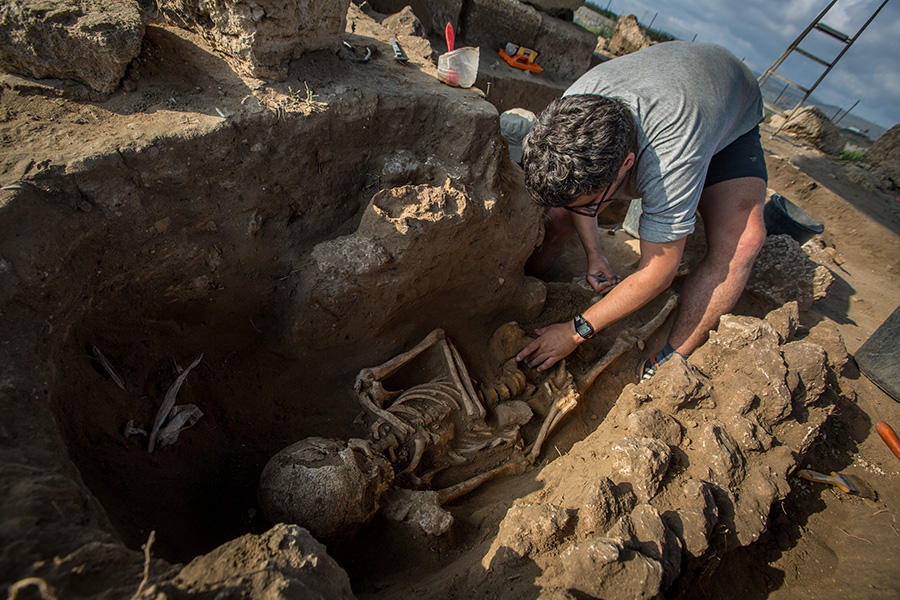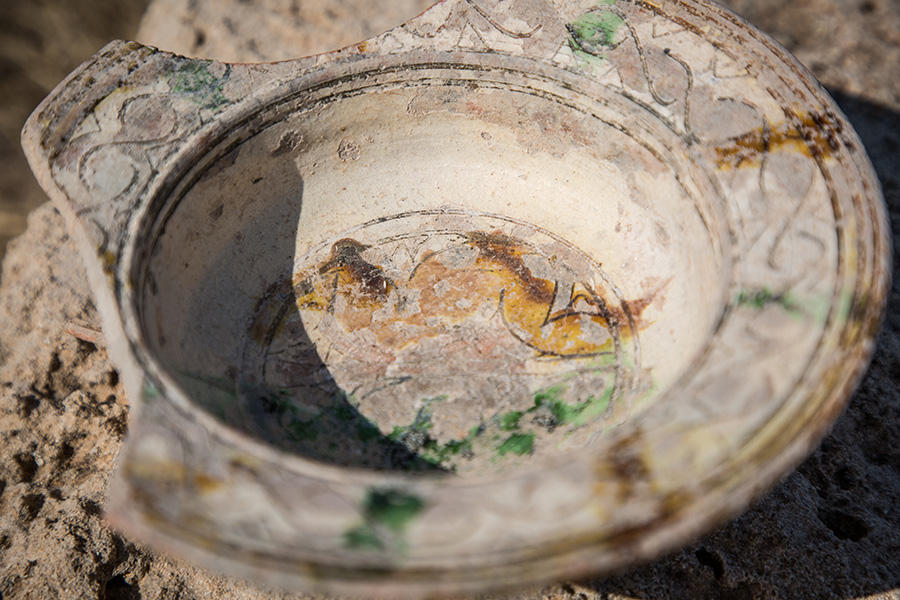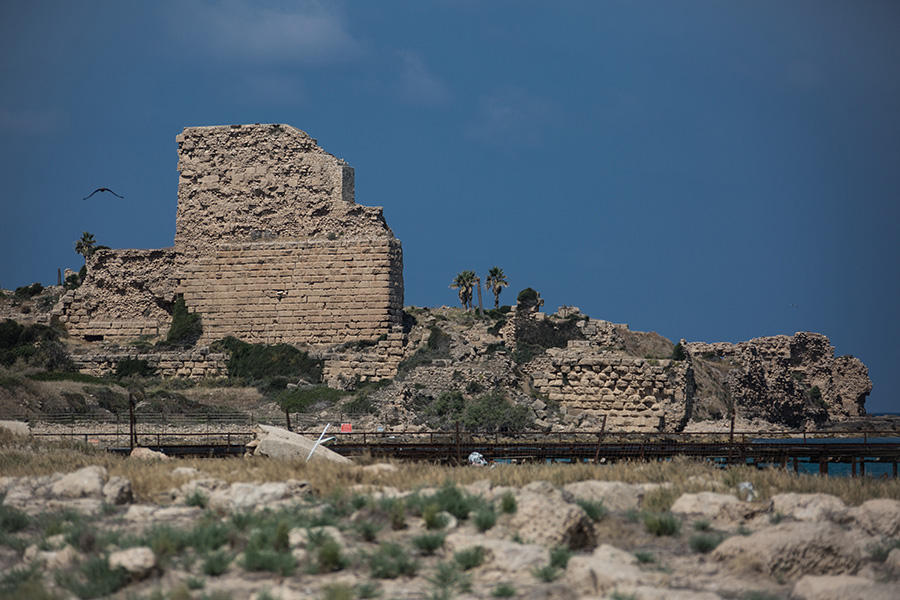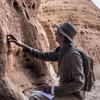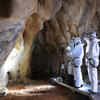You are here
An Ancient Crusader Cemetery

You specialize in funerary archaeology and anthropology, what does this entail?
Yves Gleize:1 The objective is to shed light on funeral rites and on the place of the dead in past cultures. To this end, we examine the material remains from funerary contexts and reconstruct rites by carefully observing the position of bones and of archaeological artifacts. We then compare our findings with existing data concerning the biological identity of the dead, namely their age and gender, and in some cases the circumstances surrounding their death. In any given era, not everyone is buried in the same place or in the same manner. Identifying the rituals accompanying burials, the nature of the tombs, their orientation and so on, is a source of vital information for learning about how a given human group functioned, and for demonstrating the cultural, economic and political forces at play.

What period do you enjoy working on most?
Y-G: The Middle Ages. I am particularly interested in contexts where different cultures came into contact, such as medieval Ethiopia, where Christian, Muslim and Pagan areas existed side-by-side, and where the funeral rites specific to each of these communities evolved, and, on occasion, intermingled. Similarly, the Middle East at the time of the Crusades is extremely interesting since, from the capture of Jerusalem by the Frankish army in 1099 to the fall of Akko in 1291, hundreds of thousands of Christians travelling from practically all corners of the West came into contact with Oriental Christians, and of course with Muslim populations. In Europe at that time, the Church required that Christians be buried in their own parish cemetery. We would like to determine whether this model was applied rigorously throughout the Crusader states of the Holy Land, given that the bodies of latin Christians (Crusader knights and soldiers, pilgrims, merchants, and so on) were not brought back to Europe but were buried in situ.
Is there a great deal of archaeological material for studying the funeral rites in the Crusader states?
Y-G: Tombs have been unearthed in Caesarea, Jerusalem, Tel Jezreel, al-Qubeiba and other places. But the digs at these sites are like postage stamps in comparison with the 7500m2 cemetery in Atlit, a dozen or so kilometers to the south of Haifa, where we have been conducting excavations since 2015. This exceptional group of almost 2000 tombs is right next to the Château Pèlerin, a fortress built in 1218 to consolidate the coastal Crusader strongholds and to protect convoys and pilgrims travelling from Akko. This is the largest and best-preserved of all the cemeteries within the Crusader states.
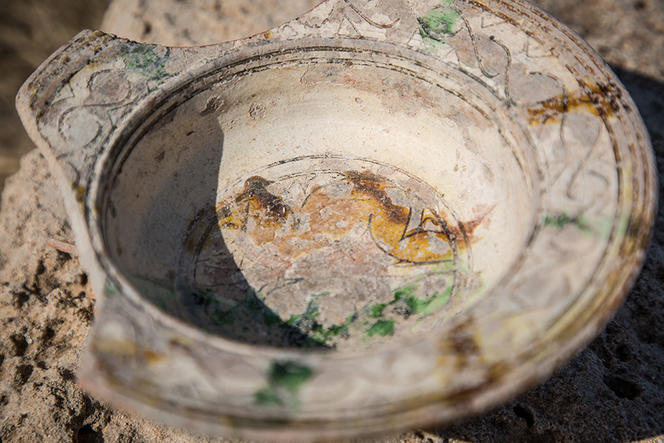
Do the data currently in your possession allow you to reconstruct the specific funeral rites used for men, women, children and even babies buried at this site?
Y-G: Yes they do. First, as in the West, many tombs have been partially destroyed by new sepulchers. Moreover, in most of the tombs studied, the bodies were on their backs, which also corresponds to Christian tradition. Yet the tombs do not lie along an East-West axis and the chosen orientations still remain something of a mystery. Similarly, the cemetery was probably used for the burial of pilgrims, as suggested by the remains of an elderly man interred with his hands joined in prayer and what appears to be a pilgrim’s staff. And there is no evidence that all the dead were of European origin. Local populations of Christians and Christian converts from villages associated with the fortress could also be buried here. However, until now there is no evidence to support the presence of any Muslim tombs.
Would you say that there is a renewed interest in Crusade archaeology?
Y-G: Following the work (culminating in exceptional archaeological discoveries) conducted by Israeli archaeologist Eliezer Stern in the 1990s at Akko, the true capital of the Kingdom of Jerusalem in the 13th century, there has truly been a rebirth from 2010 onwards thanks to the archaeological digs of a French team in Caesarea and of an Israeli-German team in Arsur. In addition to the results emanating from rescue archaeology, there is the ongoing archaeological research undertaken by the University of Haifa at Montfort Castle (to the north), the principal stronghold of the Teutonic Order between 1227 and 1271, as well as the excavation by the French team, working alongside the Israelis, at Belvoir Castle, occupied by the Knights Hospitalier (in Galilee).
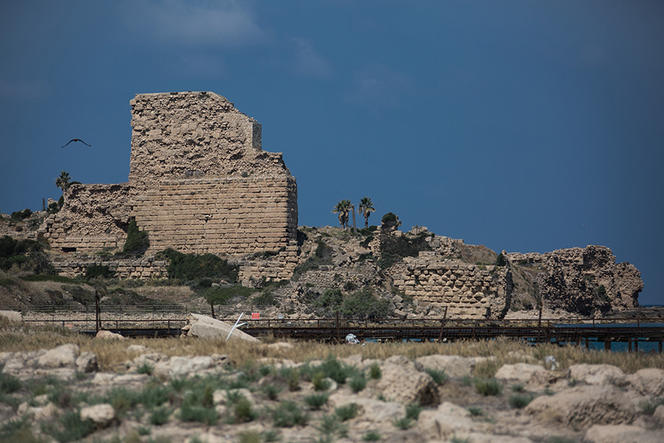
The archaeological investigations at the Belvoir and Atlit sites are being undertaken in close collaboration with the Centre de Recherche Français à Jerusalem (CRFJ). What is the modus operandi of this establishment, which is playing a pivotal role in the development of archaeological excavations in Israel?
François Bon:2 The center is open to all the human and social sciences, but archaeology occupies a privileged position among our research activities. Having such a center in Israel has allowed us to establish long-term relations with local archaeologists and scientific institutions such as the Israel Antiquities Authority, affiliated with the CNRS through a special convention. The study of the Crusader states is a central theme, along with the neolithization of the South Levant (i.e., the moment at which groups of humans who had been hunter-gatherers for tens of thousands of years began to shift towards agriculture) as well as Bronze Age societies.
Under the aegis of the French Ministry for Europe and Foreign Affairs and the CNRS, the CRFJ enjoys the status of Mixed Unit of French Overseas Research Institutes (UMIFRE). In what ways is this network precious for mediaeval archaeology?
F.B: France is the only country with such a network of laboratories set up abroad. The enormous advantage of these establishments, which are present on all five continents and highly concentrated within a band stretching from Rabat to Kabul and from Turkey to Ethiopia, is to provide archaeologists working with CNRS research units, as well as doctoral and postdoctoral students, with an opportunity for long stays (or short but repeated stays) in the vicinity of their field stations, with each unit providing administrative assistance, housing excavation equipment, and organizing scientific workshops, training seminars, and in some cases conferences.
Explore more
Author
Philippe Testard-Vaillant is a journalist. He lives and works in south-eastern France. He has also authored and co-authored several books, including Le Guide du Paris savant (Paris: Belin) and Mon corps, la première merveille du monde (Paris: JC Lattès).



